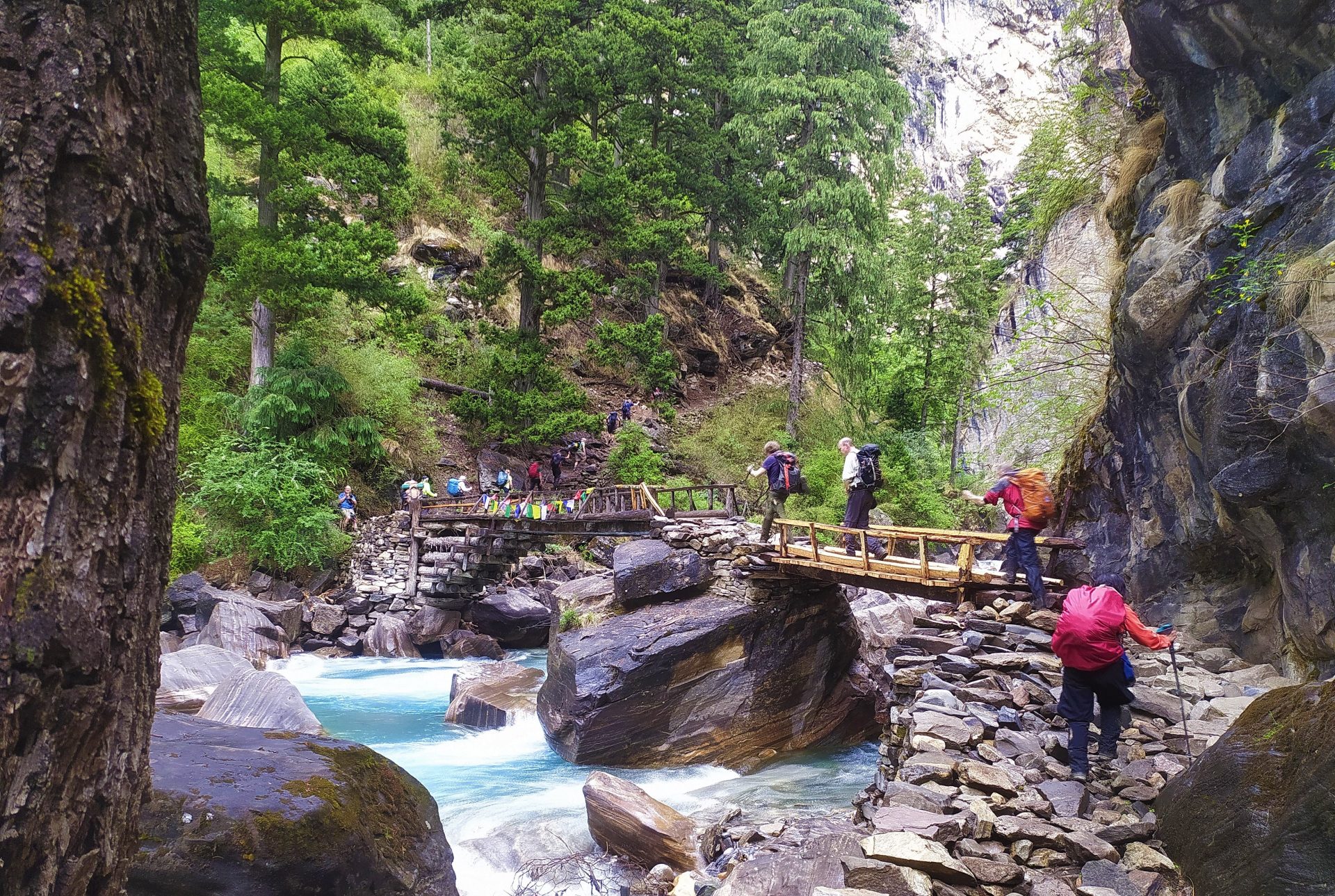An often-used phrase in Nepal is ‘Nepali flat’. Your guide will surely say this to you a few times. This means the trail is about to ‘undulate’ quite considerably. Distances are not measured in conventional meters, km, or even miles on the trails in Nepal, but in walking times. This is because the trails go uphill or downhill, but are seemingly never flat. Physical fitness for trekking is important and we recommend you undertake a variety of exercises to prepare for your trek, and specific activities that you relish to help you stay motivated. It is also important to take on some outdoor trek training, rather than just walking on flat terrain.
You should be able to walk for 7 to 9 hrs in a day on undulating terrain (i.e. going up and downhill) and not feel exhausted! There are also a few steep hills to negotiate (takes about 2hrs) and so you should be ready for these.
Guidelines to get prepared before trekking to the Himalayas:
Workout schedule: Before your trek, make a commitment to prepare yourself for trekking by setting a workout schedule. You should start training several months before your trek to achieve optimum fitness. You can visit the gym and initiate various fitness activities. Aerobic fitness is a key factor in a comfortable trekking experience.
Focus on endurance: Trekking in the Himalayas engrosses lengthy days of sustained movement. Try a longer exercise to prepare your body for longer distances once or twice per week.
Strength Training: In addition to your aerobic conditioning, use strength training exercises to tone your muscles, legs, back, shoulders, arms, and abdominal muscles. Using free weights or machines at the gym will build up your strength. Squats are great for exercising your core and especially your legs, as you will need all the leg strength you can get to make it through.
Likewise, prepare your body accordingly, as trekking in the mountain involves many steep inclines and declines. Put hiking on the hills as your daily workout at least once or twice per week,
Mental preparation and listening to your body: It is a must to keep yourself calm & handle stress in different conditions. In most cases. Trek in the Himalayas is one of the most mesmerizing yet daunting treks in the Himalayas. Mental preparation is just as significant as physical preparation when it comes to trekking in the Himalayas. When you trek, try to relax your body. One of the bad things that can occur throughout your trek is altitude sickness. That’s why one needs to listen to the body.
Medical advice: Pre-existing health conditions can create trekking at high altitudes even more complicated for you. We do recommend you consult your doctor or health advisor beforehand and talk about your trekking plans to take medical advice.
Stay rehydrated and REST: Rest days are crucial. Allow your body to recover along with hard training. That includes a couple of days of rest every week during training, and before the trek. In addition, Focus on staying well-hydrated during your training. If you’re familiar with trekking, bringing snacks and small doses of sugar can be helpful to give you bursts of energy.
Sound Sleep: Try to get at least eight hours of sleep at night during your training. People often have difficulty sleeping at a higher elevation, and lessened sleep will make your trip much more challenging.
Above suggestions are what will keep you motivated and gives you extra amount of energy to trek. This information could be the best physical fitness for trekking guidelines.









